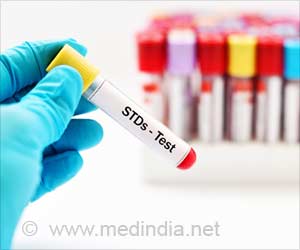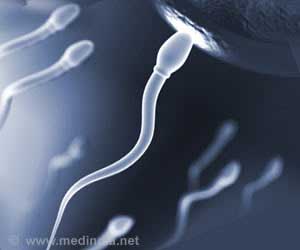One in four teenaged girls in the United Sates has been infected with at least one sexually transmitted disease, according to a study released by the Centers for Disease Control
One in four teenaged girls in the United Sates has been infected with at least one sexually transmitted disease, according to a study released by the Centers for Disease Control and Prevention.
The first study to examine the combined national prevalence of common STDs among adolescent women in the United States estimates that at least 3.2 million teens aged 14 to 19 are currently infected.Since the study only tested for the four most common sexually transmitted diseases, it is possible that the total prevalence among US teens is greater than the study's rate of 26 percent, the authors warned.
"Today's data demonstrate the significant health risk STDs pose to millions of young women in this country every year," said Kevin Fenton, director of the CDC's National Center for HIV/AIDS, Viral Hepatitis, STD and TB Prevention.
"Given that the health effects of STDs for women -- from infertility to cervical cancer -- are particularly severe, STD screening, vaccination and other prevention strategies for sexually active women are among our highest public health priorities."
Half of the 838 girls who participated in the study reported ever having sex and of those, 40 percent were infected with an STD.
African American girls were particularly at risk: 48 percent of all African American girls were infected with an STD compared to 20 percent of white teens tested.
The most common STD overall was human papillomavirus, or HPV, with an infection rate of 18.3 percent.
Chlamydia was discovered in 3.9 percent of the teens, trichomoniasis in 2.5 percent and herpes in 1.9 percent.
Among teens who had an STD, 15 percent had more than one.
Infections rate rose to 50 percent among girls with three or more partners while 20 percent of those who had only had sex with one person had been infected.
"High STD infection rates among young women, particularly young African-American women, are clear signs that we must continue developing ways to reach those most at risk," said John Douglas, director of the CDC's Division of STD Prevention.
"STD screening and early treatment can prevent some of the most devastating effects of untreated STDs."
The CDC recommends HPV vaccination for all girls and women between the age of 11 and 26 and annual Chlamydia screening for sexually active women under the age of 25.
While most HPV infections will clear on their own, some will persist and can cause cervical cancer.
Two other studies released Tuesday found inadequate screening of high-risk teens.
The first found that just 27 percent of young women seeking emergency contraception were screened for chlamydia or gonorrhea.
The second found that only 38 percent of young women receiving contraceptive services associated with unprotected sex such as pregnancy tests were offered STD testing, counseling or treatment.
Source-AFP
SRM/L






